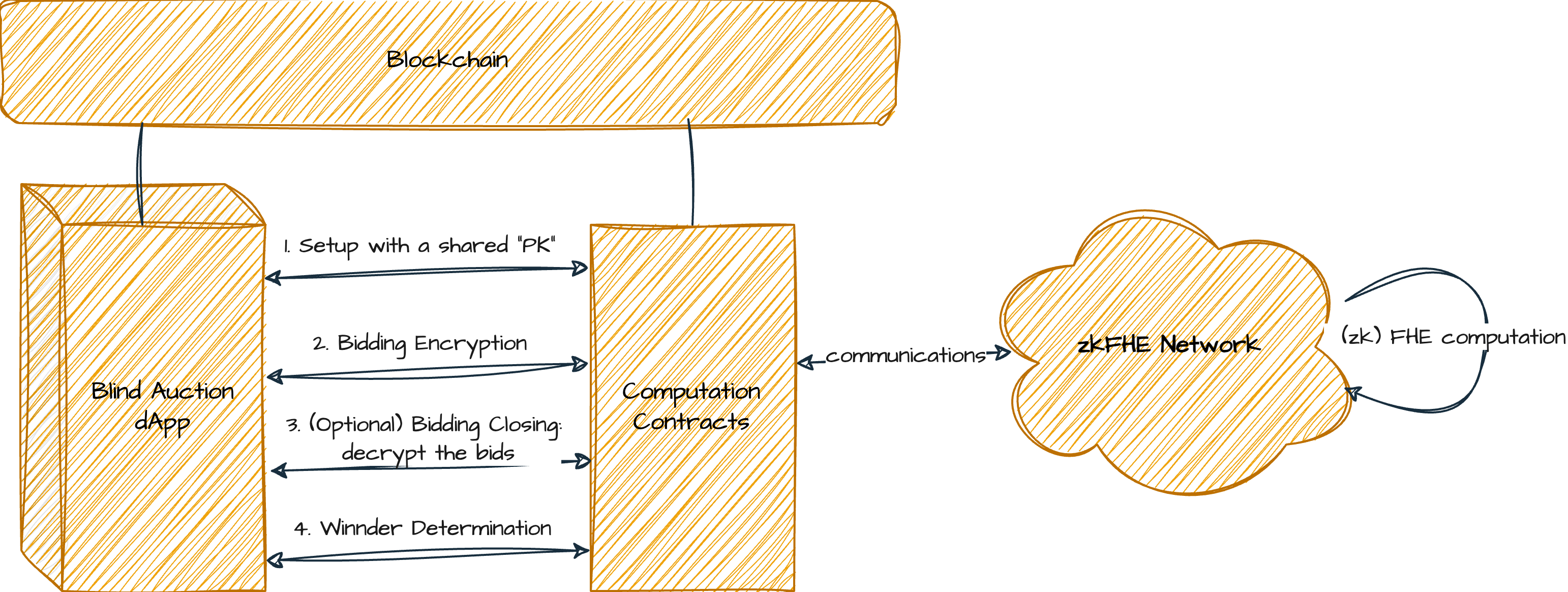Blind Auction
A blind auction is a type of auction where bidders submit their bids without knowing the bids of other participants. The highest bidder typically wins the auction, but the process of submitting bids and determining the winner can vary. Key characteristics of a blind auction include:
- Sealed Bids: Bids are submitted in a sealed manner, meaning that no bidder knows the amount bid by others.
- One-Time Submission: Bidders submit their bids once, without any opportunity to adjust their bids based on others' offers.
- Winner Determination: The auctioneer opens all bids simultaneously after the submission period ends and determines the winner based on the highest bid (or other predefined criteria).
Integrating blind auctions with blockchain and smart contracts offers significant improvements in terms of security, transparency, and trust, making it an attractive option for various industries and applications. However, the privacy of blind auction is unable to be achieved without cryptographic techniques.
FHE-based Blind Auction
We explain a basic solution that integrates blind auction with zkFHE network.
Setup
The blind auction contract communicates with zkFHE network and requires a subset of zkFHE nodes to create a shared public key PK.
Bidding Phase
Bid Submission: Participants submit their bids in a sealed manner. This can be achieved by encrypting each bid with the shared public key PK.
Deposit/Collateral: Participants may be required to lock a certain amount of funds or tokens in the smart contract as a guarantee of their bid.
Bid Closing
The bidding phase ends at a predefined time, and no further bids are accepted. Optionally, in some blind auction implementations, participants may need to reveal their bids prior to determining the winner. This can be achieved by threshold decrypting the bids with zkFHE network.
Winner Determination
The zkFHE network evaluates all submitted bids according to the auction rules and this can be achieved by homomorphically comparing and sorting the bids. For example, it identifies the highest bid in a first-price sealed-bid auction or the second-highest bid in a Vickrey auction.
The winning bid shall be revealed by threshold decrypting the bid. The blind auction contract announces the winner and the winning bid. This information is recorded on the blockchain for transparency.
